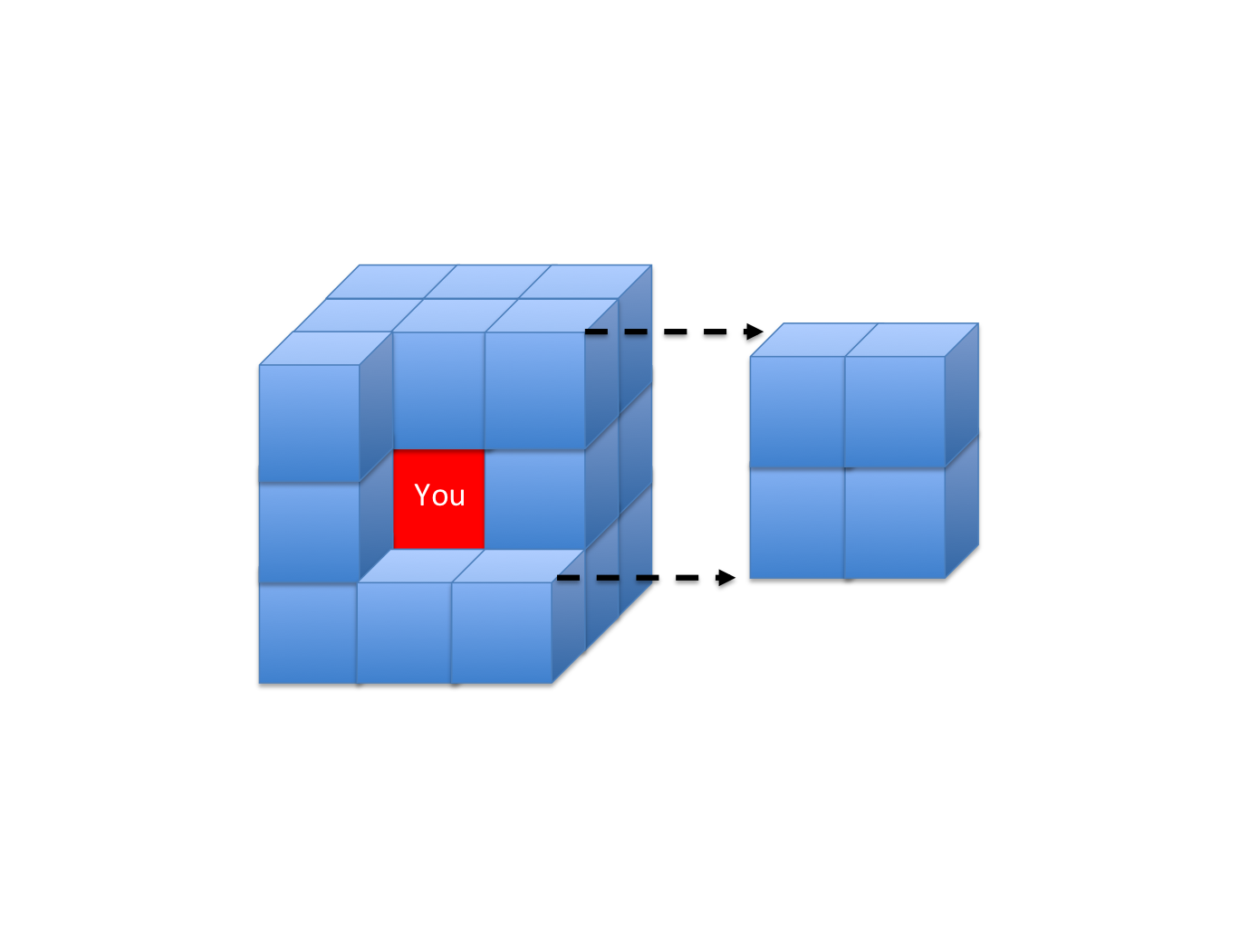
ABOUT the book
cube consciousness
By: Dave Hettinger
The idea is to give people a simple way to model their conscious experience from one moment to the next. Doing so will help them to realize a greater appreciation for life in the present moment.
Right now, your conscious experience consists of your thoughts, your feelings, and any and all sensations (or sense experiences). By referring to each thought, each feeling, and each sense experience as a “cube” generically, any instantaneous moment can be modeled. Modeling instantaneous moments helps us break down our conscious experience from one moment to the next, allowing us to focus on life in the present moment, just as it is.
The Cube Consciousness model is one large, three-dimensional cube, comprised of 27 smaller cubes, as shown in the image below. “You” are at the center of the cube model. And the cubes that surround you represent whatever you could choose to focus on in the present moment.
Cube Consciousness is available now in paperback and Kindle formats on Amazon, and as an audio book on Audible.

the cube consciousness model is governed by five core principles: (1) Pointing, (2) Interaction, (3) Clustering, (4) Patterning, and (5) Chance.
Pointing
The first principle of Cube Consciousness is Pointing. The Pointing principle says that whenever we think a thought, feel a feeling, or focus on one of our sense experiences, we’re using our minds to point to that cube in our conscious experience. In the model, you can visualize Pointing as focusing on one of the 26 cubes that surrounds you. Since we point to wherever we are focused, in the present moment.
Interaction
The second principle of Cube Consciousness is Interaction. Interaction is defined as any exchange between two or more cubes in our conscious experience. Interactions are triggered by our sense experiences, meaning that interactions occur at the precise moment we see, taste, touch, hear, smell, think, or feel anything.
Clustering
The third principle of Cube Consciousness is Clustering. Clustering says that we’re limited in the amount of information that we can process (or focus on) in the present moment, which is why the number of cubes in the model is always finite. In the context of Cube Consciousness, Clustering says that we can only focus on a finite number of cubes in the present moment.
Patterning
The fourth principle of Cube Consciousness is Patterning. Patterning is what you do the split second that a cube enters your conscious experience. You process it. And “it” could be anything, from a face of someone that looks familiar, to the smell of milk that’s gone bad. You can therefore think of Patterning as your internal processor. And it governs, among other things, your decisions, selections, and reactions to cubes in your conscious experience.
Chance
The fifth and final principle of Cube Consciousness is Chance. The Chance principle says that what happens in our conscious experience from one moment to the next is never 100% in our control. Chance cubes are the ones that we experience in consciousness, but without our choosing to experience them. They just happen.
Contact the author
Please complete the form below
In addition to the book and associated materials, Stepping Stone Content LLC also provides professional business consulting services and educational services (e.g., lectures, workshops, or leadership training) on the subject of Cube Consciousness. Contact us to learn more.


